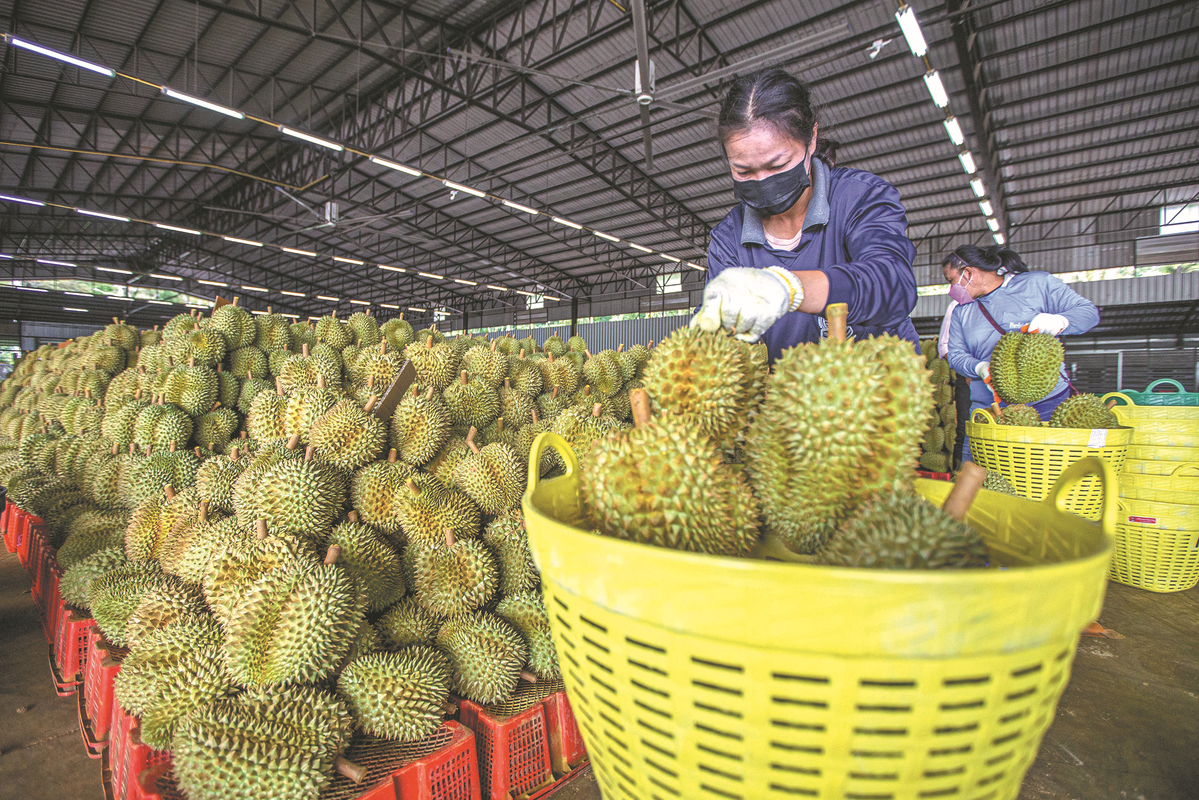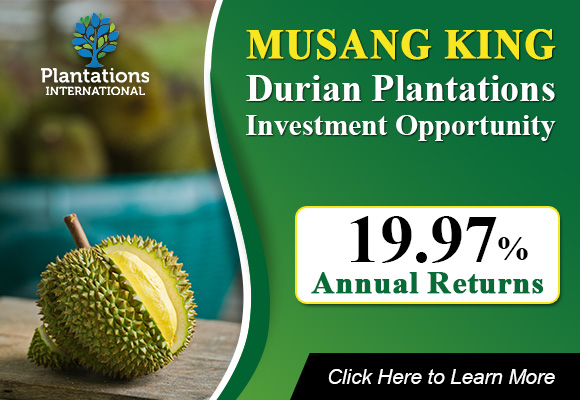There’s good news for Chinese durian lovers: More shipments of the pungent-smelling tropical durian fruit are making their way into China from Southeast Asia, thanks to the Regional Comprehensive Economic Partnership, or RCEP.
A batch of 18.24 metric tons of fresh Vietnamese durians arrived in Youyiguan Port in South China’s Guangxi Zhuang autonomous region in late September. The durian shipment made Vietnam the second country in the Association of Southeast Asian Nations, after Thailand, to gain access to the Chinese market for its fresh durians after the trade agreement went into force in January. And shipments of other kinds of fruit are also increasing.
“This is the first shipment of Vietnamese durians through Youyiguan Port. It only took two hours to transport this batch of durians from Vietnam to Youyiguan checkpoint. So the freshness and taste of durians can be better preserved,” said Qin Jun, vice-president of YH Global, the importer of the batch.
Qin said the unique durian business environment in the Chongzuo area of the China (Guangxi) Pilot Free Trade Zone and the implementation of the RCEP would bring more opportunities to local enterprises.
With the implementation of the RCEP, it’s estimated that more durians will pour into China with lower prices. Song Qingrun, associate professor at Beijing Foreign Studies University’s School of Asian Studies, said the RCEP has promoted more cooperation on agricultural trade among the pact’s members.
China’s imports of fresh durian last year surged 43.7% from the previous year to more than 820,000 tons, official figures showed, with the total value of US$4.2 billion marking a jump of over 80%.
Huge Durian Market
“China, with its large population and demands, has been a major target market of Southeast Asian durian countries. Most of the fruit from those countries are tropical ones that require better storage and faster transportation,” Song said.
“The implementation of the RCEP has facilitated the durian customs clearance process, and its tariff-reduction policies have also encouraged more kinds of fruit to flow into China.”
Some 380,000 tons of fruit from ASEAN nations entered the Chinese market via Guangxi checkpoints with a value of 5.83 billion yuan ($800 million) in the first eight months of 2022.
The hustle and bustle of the growing durian trade also can be seen in Taizhou, in East China’s Zhejiang province. A cargo ship left the city’s Yuhuan Damaiyu Port in August, marking the fulfillment of its planned imports of fruit from RCEP members.
In April the port opened its first shipping route for fruit imports from RCEP members. First came New Zealand kiwi fruit, then others. In total, the port had contributed to about 76,650 tons of fruit imports by late August.
So far, at least 66 kinds of fruit from nine countries, including durian from Malaysia, Vietnam, Thailand, the Philippines, and Cambodia, have gained approval to be imported into China.
The COVID-19 pandemic has dealt a heavy blow to the region’s economies. But the facilitation of agricultural trade under the RCEP could boost incomes of local farmers, which would in turn promote the farming industry, said Song.
The scholar added that in addition to the agricultural sector, the multilateral pact has pushed trade between the member countries to a new level amid growing global economic uncertainty, boosting confidence in the region’s economic recovery from the pandemic.
Trade between China and the 14 other RCEP members reached 8.32 trillion yuan in the first eight months of this year, accounting for 30.5 percent of the country’s total foreign trade, Vice-Commerce Minister Wang Shouwen said in late September.
Since the RCEP took effect, it has delivered increasingly bigger dividends to companies through tariff concessions, trade facilitation, and other policies, he said.


